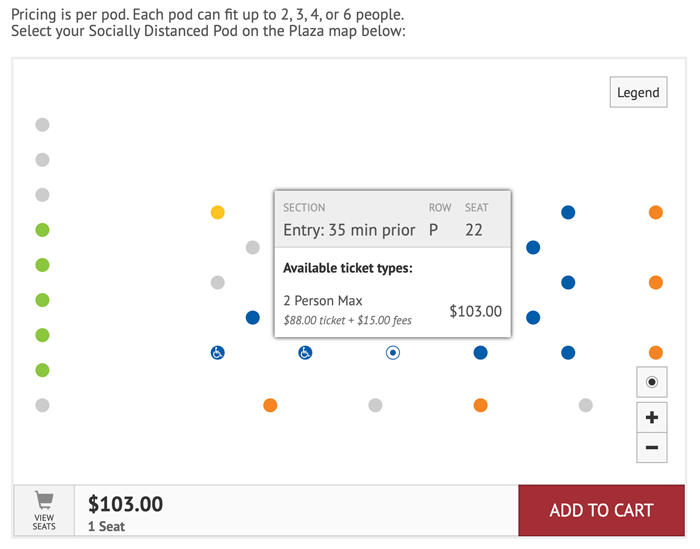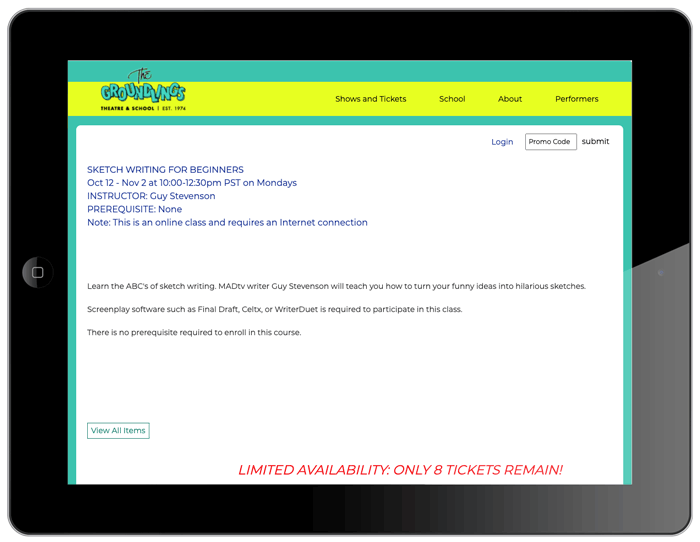Theatre
Arts and Culture
Article
Insights & Innovation
ddb9c7b2-070d-4e24-93c4-1d560898e928
5 min
https://edge.sitecorecloud.io/tessituraneab9a-tessiturane5642-staging-5396/media/Images/Discover-Images/Thought-Leadership/Birmingham-Hippodrome-VanGough.png?h=465&iar=0&w=768
Inventive, audience-focused responses cultivate successful outcomes
Five theatres doing inspiring work
3/28/2021
5 min
Engaging audiences. Strengthening relationships. Diversifying revenue streams.
These are just three of the traits we are seeing in theatre companies that are thriving in these uncertain times. We’ve collected five examples of clever and audience-focused responses that have inspired us from our global theatre community.
1. ZACH Theatre, Austin, Texas
In addition to artistic and programming considerations, the biggest question right now is probably about safety for audiences and front-of-house staff. ZACH Theatre in Austin, Texas has shown great creativity and resourcefulness in designing the front-of-house experience for their outdoor concert series.
ZACH Theatre repurposed their expansive plaza as a concert venue. Since the plaza is an open expanse, it doesn’t have built-in features like seats or aisles — but it does provide an open-air blank slate with numerous possibilities. Audiences are seated in “pods” positioned at least six feet away from one another. Pods hold two to six people each, indicated by markers on the ground and pricing varies vary based on pod size, proximity to the stage, and other amenities.

Read more about ZACH Theatre’s strategies to bring back audiences safely.
2. The Young Vic, London, UK
In the midst of the turbulent July of 2020, Kwame Kwei-Armah, Artistic Director of Young Vic Theatre, joined Tessitura President & CEO, Andrew Recinos for a conversation about the role of theatre in unprecedented times.
“Our theatres have to look like our cities,” Kwame said. “In London, Black and people of color are over 45% of the population. Therefore, if I walk into any theatre and you are less than 45%, you’ve got work to do.”
He pointed to his own theatre as one that still has work to do and suggested the way forward: “You’ve got to look at what structural pathways have been blocked and what structural pathways you can put in place in order to accelerate diversity, equality and inclusion.”
“You’ve got to look at what structural pathways have been blocked and what structural pathways you can put in place.” Kwame Kwei-Armah Artistic Director, The Young Vic
View Kwame Kwei-Armah’s conversation with Andrew Recinos.
3. The Groundlings, Los Angeles, California
The Groundlings Theatre & School provides improv classes and shows in their theatre spaces in Los Angeles and in normal times has a revenue mix of ticket sales, class registrations and fundraising. The pandemic initially knocked tickets and class registrations out of the equation. Within weeks, they moved their classes and shows online. What have they accomplished?
Prior to the pandemic, The Groundlings’ audiences and students were all local to Los Angeles. Now more than one-third of their students come from out of town, including some as far away as Australia, and they are on track to match or exceed their pre-pandemic earned income levels.

4. Birmingham Hippodrome, UK
Like many arts and cultural organisations, Birmingham Hippodrome has needed to re-think the way it does business. When they realised there was no safe, economically sound way to hold performances in their 1,850-seat auditorium, they decided to re-define the stage.
They asked themselves a different question: what if they physically distanced their entire building — not just their auditorium? What if the Hippodrome itself became the stage? And so they brought in the immersive Van Gogh Alive experience, transforming their entire facility into a gallery. They were able to welcome tens of thousands of visitors, who safely visited the Hippodrome to take in the exhibit.
“The opportunity to do something completely different with our spaces, and still provide a high quality and compelling cultural experience, came at exactly the right moment." — Fiona Allan, Birmingham Hippodrome
“It being financially unviable for Birmingham Hippodrome to reopen for live performance until social distancing guidance is relaxed, we have had to completely rethink how to use the building and how to serve our public,” said Artistic Director and Chief Executive Officer Fiona Allan. “The opportunity to do something completely different with our spaces, and still provide a high quality and compelling cultural experience, came at exactly the right moment.”
Read more about organizations delivering safe experiences.
5. Stratford Festival, Canada
We all know first-hand that engaging on screen has a different quality from engaging in real life. Planning your virtual experiences requires creative thought around engaging the participants in new ways. Can you incorporate social interaction? Have you built in learning opportunities? Can you send them something physical they can have at home to enrich the experience?
Stratford Festival chose to deliver their mission digitally through Stratfest@Home, a program that champions the art of storytelling and celebrates the craft of theater-making. Their Early Modern Cooking Show demonstrates the preparation of famous Shakespearean dishes, complete with recipe downloads for participants to tackle in their own kitchens.

Read more about organizations building engagement with virtual experiences
• • •
More than 700 arts and cultural organizations in 10 countries are part of our Tessitura user community. Throughout the pandemic, we have worked alongside them, supporting their survival efforts and hearing their stories. We’ve observed themes from organizations faring better than others, and identified six traits that point to a semblance of success now and for the future.
Download our strategy guide on the Six Traits of High-Performing Cultural Organizations to learn from their experiences.
Top photo: Van Gogh Alive, Birmingham Hippodrome
Topics
Theatre
/Arts & Culture

Five stories of success we heard at TLCC
Arts & Culture / COVID-19 / Community Engagement / Digital / Memberships / Ticketing & Admissions / Virtual Experiences
Institutions from London to Belfast to Dallas have strengthened engagement in many inventive ways

Why Arts & Culture is Essential Today
Arts & Culture
Healing the world requires five human traits: arts & culture delivers them all.

A contactless customer journey with a personal touch
Arts & Culture / Business Strategy / COVID-19 / Technology / Ticketing & Admissions
How Georgia Aquarium creates a visitor-focused experience